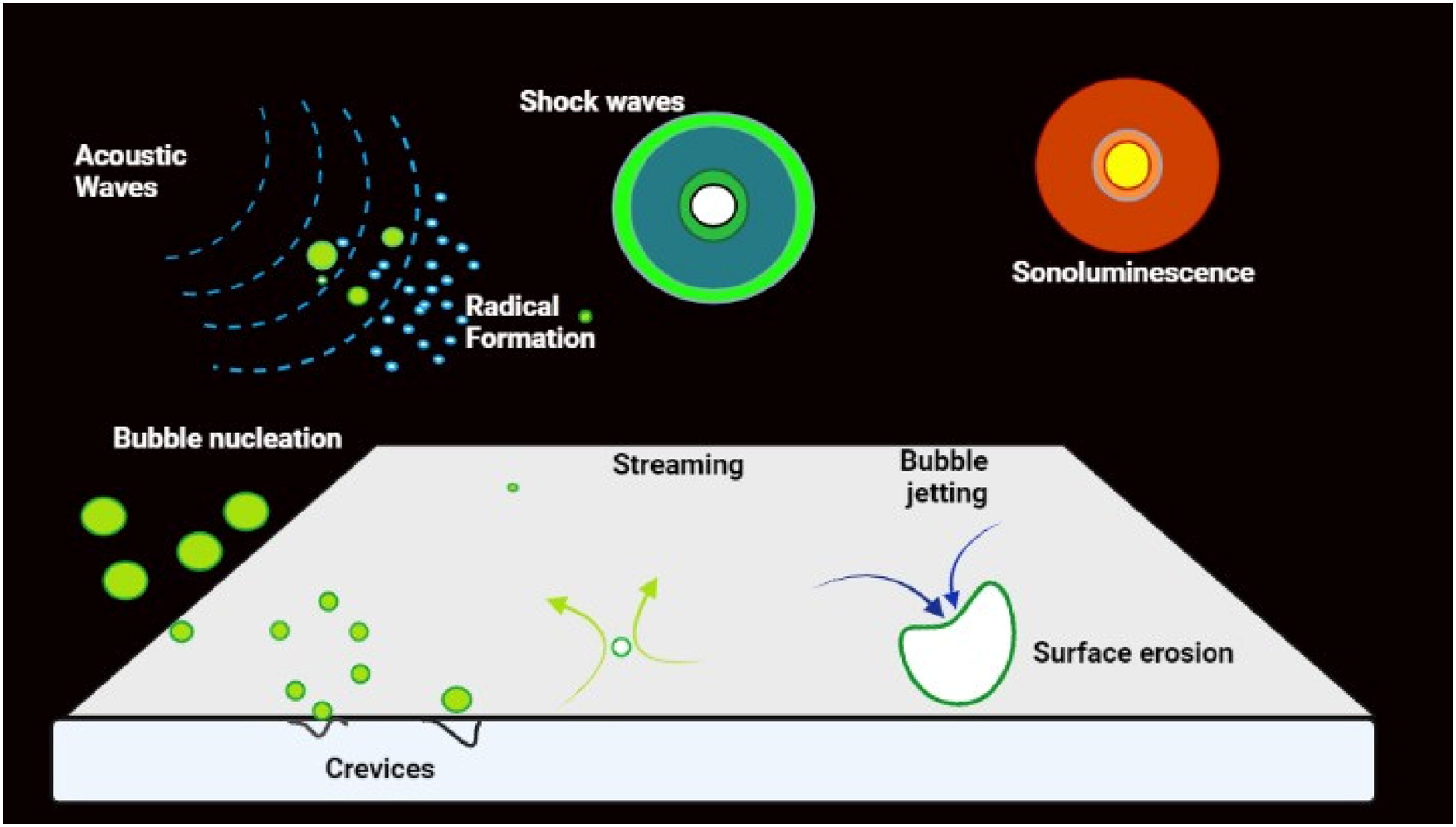
图1 高强度超声波在软物质食品表面的作用机制示意图

图2 高强度超声波抑菌机制示意图
南湖新闻网讯(通讯员 胡昊)近日,我校食品科学技术学院潘思轶教授领衔的果蔬加工化学与综合利用团队,针对食品加工业高质量发展的新要求,以高强度超声波技术作为新兴食品加工技术的代表,系统揭示了高强度超声波在食品加工中的作用机制,全面比较了其技术优势,详细阐述了其在食品加工领域的最新应用,相关成果以“Sonoprocessing: mechanisms and recent applications of power ultrasound in food”为题,在线发表在Critical Reviews in Food Science and Nutrition上,为食品产业高效绿色加工提供了新思路。
食品高效绿色加工是食品工业发展的趋势,也是实现食品加工产业高质量发展的必然途径,更是全球食品加工领域高度关注的热点及难点。高强度超声波技术作为一种新兴食品加工技术,在食品高效绿色加工及制造领域被高度关注。与传统食品加工技术相比,高场强超声波技术可以提供独特的超声物理场和超声化学场,已经在食品辅助加工、食品分子结构修饰、促进有利反应发生、食品安全与保藏、食品污染物处理等方面体现出巨大的应用潜力,并逐步实现产业化。然而,高强度超声加工在诸多食品加工领域的作用机制一直不明晰,阐明高强度加工在食品领域的作用机制一直是食品高效绿色加工及制造的热点。我校果蔬加工化学与综合利用团队自2009年便开展高强度超声加工技术在植物蛋白质结构、食品加工特性、超声化学反应和超声乳化技术等方面的应用及机制研究,不断完善食品超声加工的理论框架,拓展食品超声加工的应用场景,挖掘食品超声加工的优势,为系统性的开展食品高强度超声加工机理探索、技术开发及创新制造提供了基础。
该成果以团队多年来的研究工作为基础,系统性的总结了高强度超声加工技术在食品辅助加工、食品分子结构修饰、促进有利反应发生、食品安全保障、食品储藏、食品污染物处理等方面作用机制及最新应用成果,从多个维度比较了高强度超声加工技术的优势,全面分析其产业化趋势,为食品产业高效绿色加工提供了新思路。
该成果联合了德国、丹麦、西班牙等8个国家在食品超声加工领域的知名学者参与合作,胡昊副教授为论文通讯作者,该项目受到国家自然基金、中国科协青年人才托举工程等项目资助。
审核人:潘思轶
【英文摘要】
There is a growing interest in using green technologies in the food industry. As a green processing technique, ultrasound has a great potential to be applied in many food applications. In this review, the basic mechanism of ultrasound processing technology has been discussed. Then, ultrasound technology was reviewed from the application of assisted food processing methods, such as assisted gelation, assisted freezing and thawing, assisted crystallization, and other assisted applications. Moreover, ultrasound was reviewed from the aspect of structure and property modification technology, such as modification of polysaccharides and fats. Furthermore, ultrasound was reviewed to facilitate beneficial food reactions, such as glycosylation, enzymatic cross-linking, protein hydrolyzation, fermentation, and marination. After that, ultrasound applications in the food safety sector were reviewed from the aspect of the inactivation of microbes, degradation of pesticides, and toxins, as well inactivation of some enzymes. Finally, the applications of ultrasound technology in food waste disposal and environmental protection were reviewed. Thus, some sonoprocessing technologies can be recommended for the use in the food industry on a large scale. However, there is still a need for funding research and development projects to develop more efficient ultrasound devices.
论文链接:https://www.tandfonline.com/doi/full/10.1080/10408398.2022.2161464